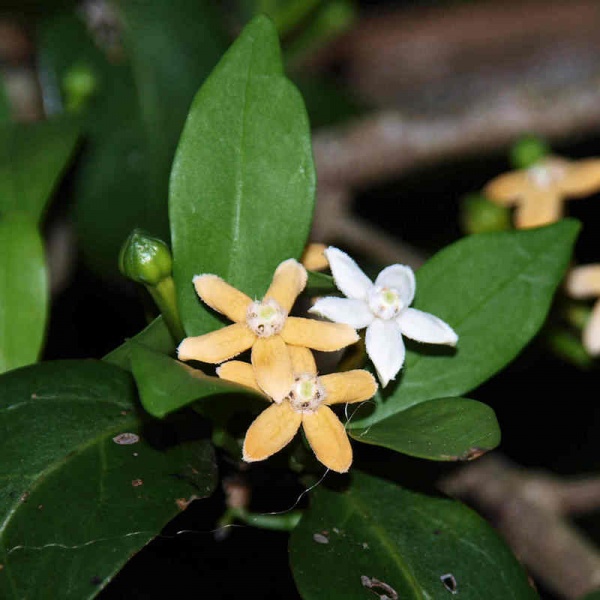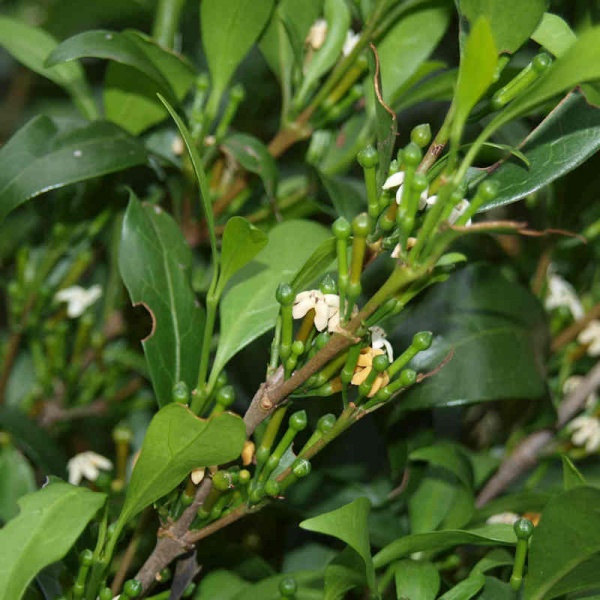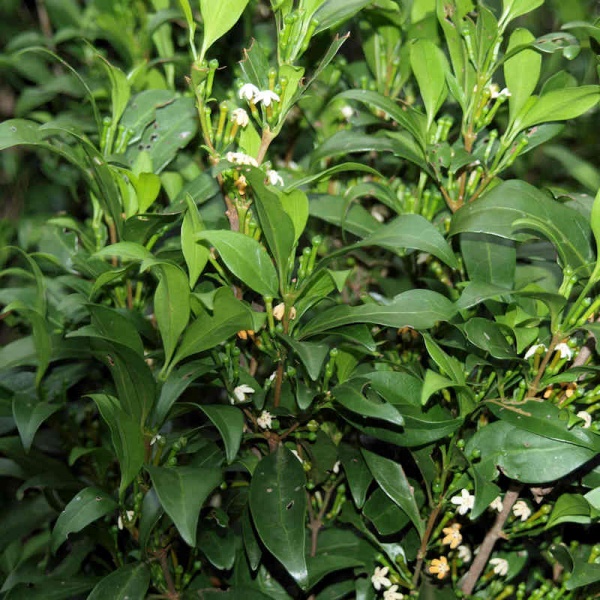Scientific Name: Cyclophyllum longipetalum
-
Pronunciation:sigh-clo-FILL-um lon-gee-PETAL-um
-
Common Name:Brush Canthium, Cooroy Canthium



-
Derivation:That genus name was derived from the Malay word 'canti', which was the name given to a tree in Malacca which was the first described species of the genus.
-
Type:
-
Family:RUBIACEAE
-
Flowers:White cream fading to light brown, 5 petals,
-
Fruit:Orange red, usually two-lobed, to 12 mm.
-
Vegetation Type:Sub-tropical and dry rainforest
-
Species List:Gum Tree Drive,
Cultural Notes
TAKE CARE! Some information about bush foods and medicines may be anecdotal. Correct identification and preparation is essential:
Fruits said to be edible. Not very palatable.
Identification Notes
Leaves: opposite, with domatia.Leaves obovate to elliptic, 2–10 cm long, 10–40 mm wide, apex obtuse or bluntly acuminate, venation ± visible on lower surface, upper surface deep green and dull, lower surface paler, domatia sometimes present; petiole 2–10 mm long.||Flowers: highly perfumed Flowers in axillary clusters of 2–6; pedicels to c. 4 mm long. Calyx 1.5–2 mm long, 5-lobed. Corolla white; tube 5–9 mm long, lobes 3–4 mm long, ciliate on margins, conspicuously pubescent at top of tube. Stigma broad, peltate. ||Fruit: Drupe compressed-obovoid, c. 10 mm diam., red, on pedicels lengthening to 8 mm long.||
Landscaping Notes
Successfully propagated by Barung Landcare||


